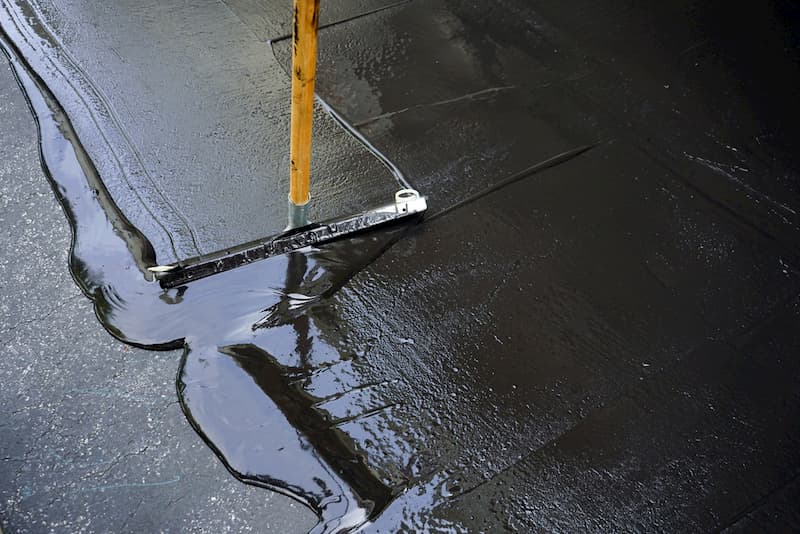Cold Mix Asphalt Vs. Hot Mix Asphalt: Which Is Right for You?

Composition Distinctions
Cold mix and warm mix asphalts differ substantially in their make-up, with distinct features that affect their efficiency and applications. Cold mix asphalt is produced by emulsifying the asphalt binder with water and an emulsifying agent prior to blending it with aggregate. This technique permits the asphalt to be workable at lower temperatures, making it perfect for momentary repairs and for use in chillier weather conditions. Hot mix asphalt, on the other hand, is produced at high temperatures, typically in between 300-350 ° F, which aids to attain better compaction and a much more sturdy final product. The hot mix asphalt manufacturing procedure entails heating the aggregate and asphalt binder separately prior to incorporating them at the asphalt plant.
In addition, cool mix asphalt has a tendency to be much less thick and a lot more flexible than warm mix asphalt. This adaptability makes it far better matched for locations with greater degrees of motion, such as driveways or roads with rush hour. On the other hand, warm mix asphalt is understood for its high longevity and resistance to rutting and cracking, making it a favored option for highways and high-traffic roads where long life is important.
Setup Process Variances
The procedure of setting up cool mix and hot mix asphalt displays remarkable variations in their demands and treatments. In contrast, warm mix asphalt demands a more sophisticated installation process. Due to the heating demands, warm mix asphalt installments are commonly brought out by specialists with customized equipment, guaranteeing an extra structurally audio and irreversible outcome.
Resilience and Longevity Elements
When thinking about asphalt options, durability and longevity are critical variables to evaluate for long lasting pavement performance. Warm mix asphalt (HMA) is understood for its phenomenal durability and longevity. The high temperature levels throughout the mixing and laying procedure permit much better compaction, resulting in a denser and more powerful sidewalk framework. This causes HMA being much more resistant to rush hour tons, severe weather, and the results of maturing contrasted to cold mix asphalt (CMA)
In regards to longevity, HMA typically outshines CMA because of its superior toughness and resistance properties. HMA pavements have a longer solution life, calling for less constant repair work and upkeep, which can convert to set you back savings in the lengthy run. Additionally, HMA pavements are more conveniently personalized to satisfy particular task requirements, additionally enhancing their durability.
Price Considerations
Considering the financial ramifications is a crucial aspect site when evaluating the choice between warm mix asphalt (HMA) and cold mix asphalt (CMA) for sidewalk jobs. While the preliminary expense of hot mix asphalt is commonly higher than that of cold mix asphalt, HMA often supplies a more affordable solution in the lengthy run due to its superior durability and long life.
In enhancement to product prices, it's vital to consider the costs linked with installation and maintenance when contrasting HMA and CMA. Eventually, the choice in between HMA and CMA should take into account not simply the initial price yet likewise the lasting financial ramifications to identify the most cost-efficient option for the certain sidewalk project.
Environmental Influence Comparison
Contrast of the ecological impacts between warm mix asphalt (HMA) and cool mix asphalt (CMA) discloses distinctive differences in sustainability techniques. HMA production like this requires heats, bring about enhanced energy intake and greenhouse gas exhausts. The process also releases unpredictable organic compounds (VOCs) and harmful air toxins (HAPs) right into the atmosphere. In contrast, CMA is created and applied at reduced temperatures, lowering power usage and emissions considerably. The lower manufacturing temperature levels of CMA cause lowered gas intake and lower levels of CO2 emissions, making it a more eco-friendly choice.
Furthermore, using CMA typically involves recycling existing asphalt pavement, promoting source preservation and decreasing the quantity of waste sent to landfills. This reusing facet additionally boosts the sustainability of CMA contrasted to HMA. In general, when thinking about the environmental influence, CMA arises as a much more environmentally sustainable selection because of its reduced energy requirements, lowered discharges, and the web link capacity for recycling existing products. By selecting CMA over HMA, road construction tasks can add positively to ecological conservation initiatives.
Final Thought
In verdict, the selection between cold mix asphalt (CMA) and hot mix asphalt (HMA) depends on different elements such as structure, installation procedure, toughness, long life, price, and environmental influence. angle parking. While CMA offers a economical and quick option for minor repair work, HMA makes certain premium resilience and durability for heavy web traffic areas. Consider these aspects very carefully to identify which kind of asphalt is the right choice for your paving requires

Considering the financial effects is a crucial element when reviewing the option in between hot mix asphalt (HMA) and cool mix asphalt (CMA) for pavement tasks. While the initial expense of warm mix asphalt is usually greater than that of chilly mix asphalt, HMA often gives an extra cost-effective remedy in the long run due to its exceptional resilience and durability. asphalt repair.Contrast of the environmental effects in between warm mix asphalt (HMA) and cool mix asphalt (CMA) reveals distinct differences in sustainability methods.In verdict, the selection in between cool mix asphalt (CMA) and hot mix asphalt (HMA) depends on different aspects such as make-up, installment procedure, longevity, durability, expense, and environmental effect